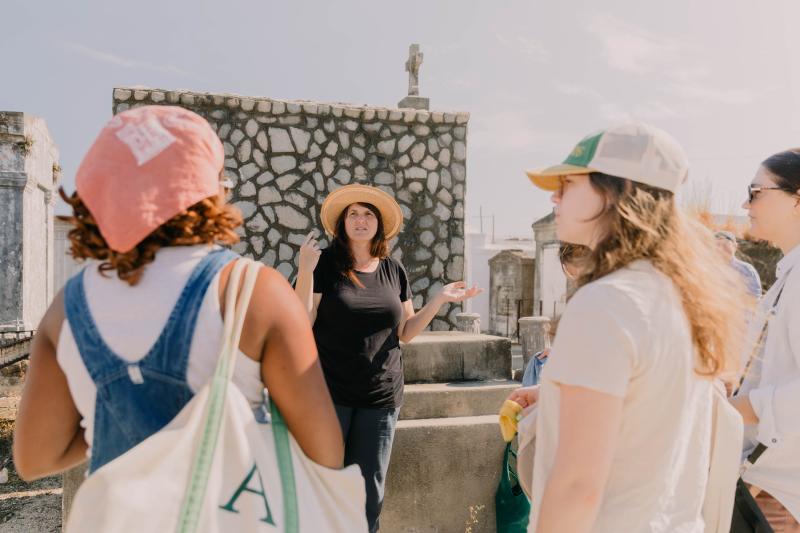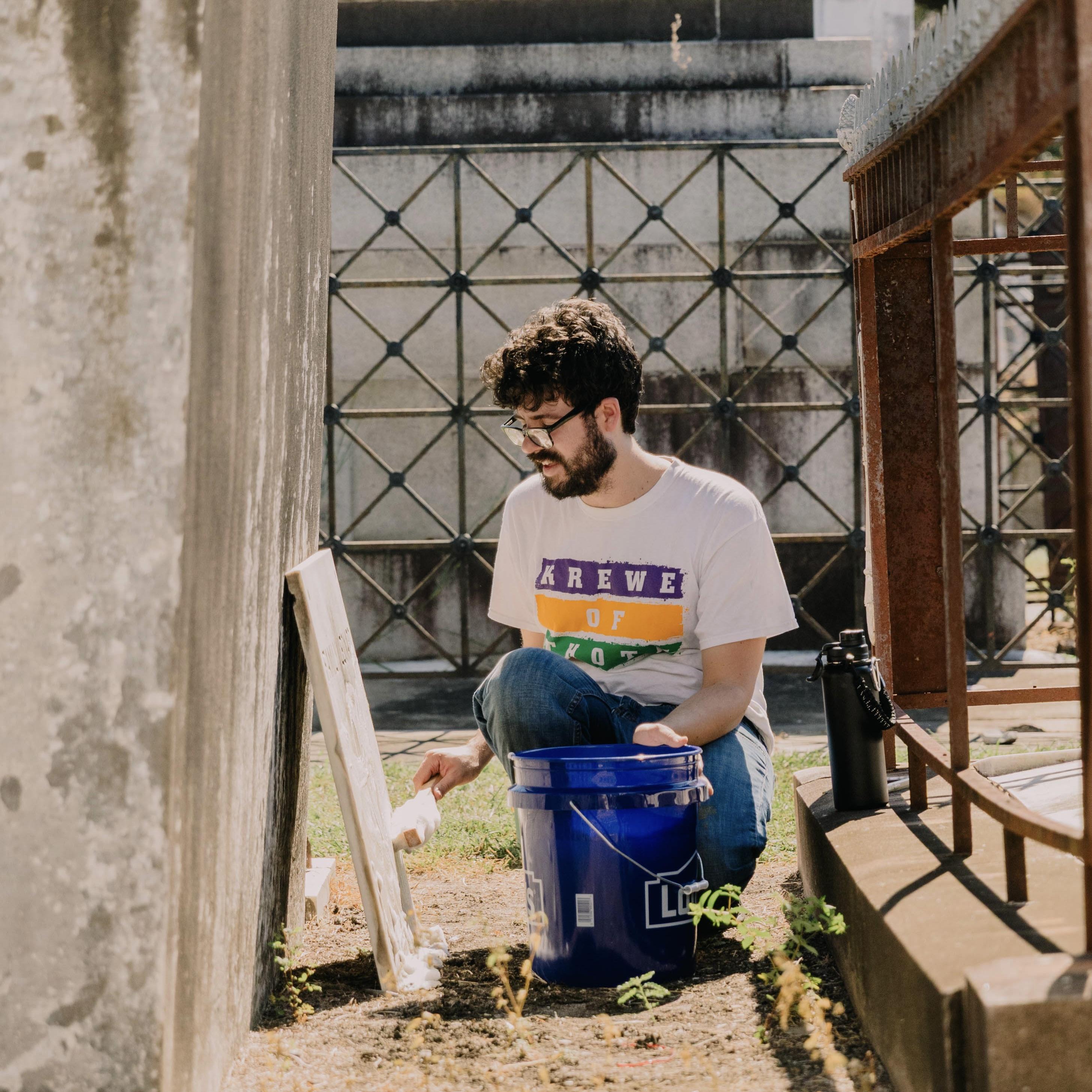Preservation in practice: Tulane students restore historic tombs
On a cloudy October morning as the sounds of Interstate 10 traffic echoed around them in St. Louis Cemetery No. 2, a group of graduate students from Tulane University knelt over broken marble, scrubbing the pieces with a mixture of horse shampoo and water.
They were cleaning closure tablets, the large front plates used to seal tombs with names and death dates, washing away decades of grime and preparing them to return to their homes.
“These names have been away from their bodies for so long. We’re giving people back their resting place,” said Stone DuVernay, who is in his first semester of the Master of Science in Historic Preservation program at Tulane’s School of Architecture and Built Environment. DuVernay was one of a cohort of students who chose to spend their fall break restoring graves during a workshop under the instruction of program director Heather Veneziano.
“I’d rather spend my fall break in a cemetery than anywhere else,” said Chai Paden, one of the students in the program.
The workshop was a pilot program for a larger workforce development program Veneziano is starting in New Orleans with World Monuments Fund. The program, called Bridge to Crafts Careers (B2CC), already exists in New York and is open to anyone interested in a career in restoration and preservation.

Veneziano, World Monuments Fund and the Preservation Resource Center of New Orleans (PRC) created the student workshop to learn about what kind of work is possible and how long projects will take. The workshop also gave Tulane students a taste of what they might do after graduation.
"There were a couple of things that called to me in this field, and cemetery preservation was a big one,” said Lydia Desormeaux, also a student in the Historic Preservation program. Now that they have some experience, these students will also get the chance to be teaching assistants for the first B2CC New Orleans workshops, which will begin this December.
B2CC in New Orleans is a program of Save Our Cemeteries, a department of the PRC. It will work with and benefit New Orleans Catholic Cemeteries. Participants in the B2CC will learn how to repair stonework and ironwork found in New Orleans cemeteries. “Our cemeteries are unique in the United States, but they are not unique globally,” said Veneziano. That means the skills participants learn with B2CC in New Orleans will also be applicable in places like the Caribbean and South America.
These skills are transferable to other masonry and ironwork restoration and preservation projects, such as the miles of historic ironwork in the French Quarter alone.
“Not only does it make a huge impact on the conservation of our cemeteries, it also provides people with skills that are highly transferable and that they can go on to have careers with,” said Veneziano. “It’s a win-win situation for everyone.”
For more information about the Historic Preservation program, which includes an undergraduate minor, a graduate certificate and a Master of Science, visit the School of Architecture and Built Environment website.


